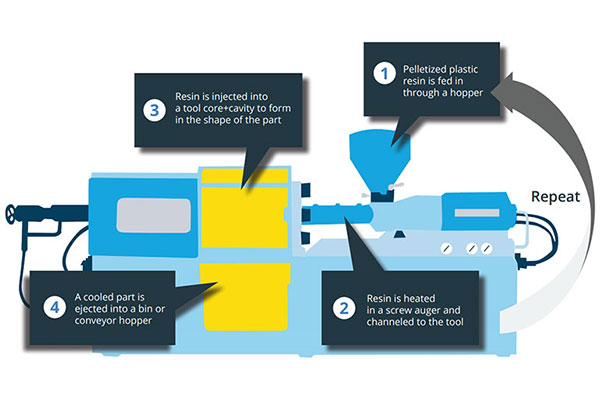Mfg Fundamentals Explaineds
Wiki Article
Die Casting - An Overview
Table of ContentsManufacturing Industries Things To Know Before You Get ThisA Biased View of Plastic ManufacturingIndicators on Hon Hai Precision You Should KnowNot known Factual Statements About Mfg Getting My Lean Production To Work6 Simple Techniques For Lean Manufacturing
The text on this page is a sample from our full White Paper 'Injection Moulding for Customers' - * Sample message * - for complete overview click the download switch above! Intro This guide is meant for people who are looking to source plastic mouldings. It gives a much needed understanding right into all that is involved with developing plastic components, from the mould tool required to the moulding process itself.If you intend to check out further, the guide covers kinds of mould devices, along with special finishing procedures such as colours & plating. Words that are underlined can be found in the reference in the appendix ... Part I: Moulding: The Essentials The Benefits of Shot Moulding Plastic shot moulding is a very exact procedure that supplies a number of benefits over various other plastic processing techniques.
Precision is perfect for very complex components. You can hold this moulding in the palm of your hand and it has employers, ribs, steel inserts, side cores and holes, made with a moving closed off feature in the mould device.
Mfg Can Be Fun For Everyone


Manufacturing Things To Know Before You Buy
from material feed & melting; material injection; cooling time cooling down ejection to the re-closing of the mould tool ready device all set next cycle. Draft angles - The wall surfaces of a moulded component must be slightly tapered in the direction in which the part is ejected from the mould tool, to permit the component to be ejected quickly.Ejector stroke - The pressing out of ejector pins to expel the moulded component from the mould tool. Ejector stroke rate, length and timing needs to be very carefully regulated to stop damage to the ejectors as well as mould tool, yet at the same time make the moulding cycle as brief as feasible.

A Biased View of Mfg
Ribs - When a plastic part has thin wall surfaces, ribs are contributed to the style to make the slim walls stronger Side cores - Side action which generates a feature on a moulded part, at an opposing angle to the regular opening instructions of the mould tool. lean manufacturing. The side core requires to be able to pull back as the plastic part can not be expelled otherwise.
Walls - The sides of a moulded part The message on this page is anchor a sample from our complete White Paper 'Shot Moulding for Buyers'.
Production procedure for producing components by injecting molten material right into a mould, or mold Simplified diagram of the procedure Injection moulding (united state spelling: shot molding) is a manufacturing process for producing parts by injecting molten material right into a mould, or mold. Injection moulding can be done with a host of materials mostly consisting of metals (for which the process is called die-casting), glasses, elastomers, confections, and also a lot of commonly polycarbonate as well as thermosetting polymers. Shot moulding is extensively used for making a variety of parts, from the tiniest parts to entire body panels of cars and trucks. Breakthroughs in 3D printing modern technology, utilizing photopolymers that do not melt during the injection moulding of some lower-temperature thermoplastics, can be utilized for some simple shot moulds. Injection moulding makes use of a special-purpose equipment that has 3 components: the have a peek at this website shot unit, the mould and also the clamp.
The Definitive Guide for Oem
, with the quantity used of the former being considerably higher.: 13 Thermoplastics are widespread due to characteristics that make them extremely suitable for shot moulding, such as convenience of recycling, adaptability for a wide selection of applications,: 89 and capability to soften and also move on heating.In several tooth cavity moulds, each tooth cavity can be identical and create the very same parts or can be one-of-a-kind and also create multiple various geometries during a solitary cycle.
When sufficient product has collected, the material is required at high pressure as well as speed right into the part forming cavity. The precise quantity of shrinking is a function of the resin being utilized, and can be relatively foreseeable. To prevent spikes in stress, the process typically makes use of a transfer placement representing a 9598% complete tooth cavity where the screw shifts from a consistent velocity to a constant stress control.
The Buzz on Oem
The packing pressure is used till the gateway (cavity entryway) solidifies. Due to its small dimension, the gate is generally the initial area to solidify via its whole thickness.: 16 Once the gate solidifies, no more material can enter the cavity; as necessary, the screw reciprocates as well as gets material for the following cycle while the product within the mould cools so that it can be ejected and be dimensionally stable.Report this wiki page